Marnbauchon Garden (만바우촌가든)
0m 21595 2024-02-13
5173-17 Gyeongdong-ro, Jinbo-myeon, Cheongsong-gun, Gyeongsangbuk-do
054-872-2263, 2264
Marnbauchon Garden, a Korean restaurant nestled near Juwangsan National Park and Dalgipokpo Falls in Cheongsong, offers a delightful culinary experience. The star of their menu is the dak baeksuk, a wholesome whole chicken soup. This delectable dish is crafted by simmering Juwangsan Sinchon mineral water, renowned for its rich mineral content, along with medicinal ingredients like ginseng, jujube, and mung beans. In addition, the restaurant boasts an inviting open-air yard and bungalow facilities, providing a serene setting where patrons can unwind and partake in various activities following their meal.
Cheongsong Yasong Art Gallery (군립 청송야송미술관)
240.81847827128152m 13513 2021-07-07
5162, Gyeongdong-ro, Cheongsong-gun, Gyeongsangbuk-do
+82-54-870-6536
The Cheongsong Yasong Art Gallery opened on April 29, 2005. The art gallery exhibits 350 Korean paintings and pottery works of Yasong Lee Won-jwa, who is a traditional Korean painter native to Cheongsong. Also on display are around 50 works of noted painters and sculptors from in and out of Korea, and over 10,000 art books, all of which have been donated to the gallery. The two-story building was formerly Sinchon Primary School, which was remodeled into an art gallery after its closure.
YeongYang Doodle Village (영양 두들마을)
5.8 Km 20567 2020-02-10
62, Dudeulmaeul-gil, Seokbo-myeon, Yeongyang-gun, Gyeongsangbuk-do
+82-10-7373-8337
Located in the administrative district of Wonri-ri, Seokbo-myeon, Yeongyang-gun, Gyeongsangbuk-do, Doodle Village's name means ‘village on a hill’ in Korean. In 1640, Lee Sim-yeong who used the pen name Seokgye, decided to build the village as an escape during the second Manchu invasion in Korea. His descendants, the family of Lee Jae-ryeong have lived and continued to build up the village since his settlement. In the year 1899 during the Joseon dynasty, Gwangjewon, the national hospital back then, was also established nearby. After the last syllable of Gwangjewon, the village was also called Wondoodle or Wonri
The village master, Seokgye, lived in his own house called Seokgye Gotaek (old Hanok house) and Seokgye Seodang, a private learning institute where he taught his students. The village also treasures many cultural heritages including 30 houses, a memorial stone for Madam Jang's first cookbook written in Hangeul (Korean alphabet) and Gwangsan Literature Laboratory, set up by famous writer Lee Mun-yeol.
Hwamaecheon Stream wraps around the village and on the rocky cliff hugging the stream, the fourth son of Master Seokgye set up Dongdae, Seodae, Nakgidae, and Sesimdae.
The village was designated as a cultural village in 1994 by the government.
Dalgi Mineral Spring [National Geopark] (달기약수탕 (청송 국가지질공원))
8.2 Km 17190 2021-06-24
16, Yaksu-gil, Cheongsong-gun, Gyeongsangbuk-do
+82-54-870-6111
Dalgi Mineral Spring was found approximately 130 years ago during construction of a waterway. The carbonated water has various minerals that help treat multiple diseases. The water is formed when rain water gets absorbed underground and meets carbon dioxide from the magma deep below.
Juwangsan Spa Tourist Hotel (주왕산온천관광호텔)
9.3 Km 16385 2021-08-10
315, Jungang-ro, Cheongsong-gun, Gyeongsangbuk-do
+82-54-874-7000
Juwangsan Spa Tourist Hotel is located approximately 15 minutes from Juwangsan National Park. The hotel has clean rooms, a Korean restaurant, banquet hall, and spa facilities. Guests may take advantage of the health programs offered at the spa or enjoy the hot springs sauna that uses alkaline water, which has been proven to heal chronic headaches and shoulder pain.
Cheongsong Apple Festival (청송사과축제)
10.0 Km 25681 2023-09-18
Wolmak-ri, Cheongsong-gun, Gyeongsangbuk-do
+82-54-873-3686
Cheongsong Apple Festival is held in the fall every year to promote the excellent quality of apples grown in the area. Cheongsong has the perfect conditions for superior taste and quality of apples, being located in a clean environment with a low amount of rainfall and plenty of sunlight. The festival offers various unique events and activities to entertain visitors.
Head House of Pansagongpa Branch of Pyeongsan Sin Clan (청송 평산신씨 판사공파 종택과 분가 고택)
10.2 Km 12647 2021-12-08
16, Jungdeul 2-gil, Cheongsong-gun, Gyeongsangbuk-do
+82-54-870-6247
Located in Cheongsong-gun, Gyeongsangbuk-do Province, Head House of Pansagongpa Branch of Pyeongsan Sin Clan is the head house of the noble Pyeongsan Sin family line. The house was created by Sin Han-tae during the reign of King Sukjong (1674-1720) of the Joseon dynasty. Since its construction centuries ago, the house has been inhabitated by the descendants of Sin Deuk-cheong, the 15th eldest grandson of General Sin Sung-gyem. This house has all of the features of an upper–class house of the Joseon period. The buildings of the house are built in a rectangular shape, with the courtyard in the center. The compound consists of Soteuldaemun (high-rising gate), Haengrangchae (servants’ quarters located next to the gate), Gotgan (storeroom in which grain and other items were stored), Anchae (room for the female family members) and a pavilion.
Seobyeok Historic House (서벽고택)
10.3 Km 7486 2021-11-01
22-2, Jungdeul 2-gil, Cheongsong-gun, Gyeongsangbuk-do
+82-54-870-6247
Located in Jungpyeong-dong at the family village of the Pyeongsan Sin clan, the Seobyeok Historic House was originally created when Sin Hanchang, a scholar from late Joseon dynasty, got married and moved out of his parents’ house. The house was expanded by Sin Chigu in 1739. The house and is built in a rectangular shape with 6 kan (traditional Korean measurement; space between two pillars) in the front, 4 kan on the sides and a courtyard in the middle.
House of Changsil [Korea Quality] / 창실고택 [한국관광 품질인증]
11.3 Km 11158 2023-12-06
39 , Songsogotaek-gil, Cheongsong-gun, Gyeongsangbuk-do
+82-10-5100-3684
Changsil Old House is a courtyard hanok in Cheongsong-gun, Gyeongsangbuk-do. It was built in 1917 by Sim Ho-taek of Songso as a home for his younger brother. The anchae (women’s house) and the sarangchae (men’s house) are arranged side by side, with the connected library and storeroom between them. Just inside the gate is a haengnangchae (servants’ quarters), and there is also a thatched hanok which is currently being rented out as a red clay room.
Chalbanggong Head House [Korea Quality] / 찰방공종택 [한국관광 품질인증]
11.4 Km 5840 2020-09-10
23-8, Songsogotaek-gil Pacheon-myeon, Cheongsong-gun, Gyeongsangbuk-do
+82-54-873-6502, +82-10-9502-7611
The Chalbanggong Head House is a resting place in nature that is open to everyone. The house was built in 1933 as the head house of Chalbanggong Shim Dang, a 9th-generation descendant of Akeungong from Cheongsong Shim’s Family. The place was also used as a village school and is designated as local cultural heritage no. 13. The structure of the house is shaped like the Korean alphabet "ㄷ". The fact that the gate of the house is facing north is very unusual. The house is positioned next to the Songso Old House, which has 99 rooms, and is composed of Ondol rooms heated by firewood as well as a wide yard and a vegetable garden. The place provides a comfortable resting space for those who want to enjoy the atmosphere of a traditional Korean-style house that they cannot easily see in urban areas. The rooms are papered with traditional Korean paper and equipped with beddings. The house is located in a region that is so quiet you can barely hear a thing except the sound of birds and wind. There is an ancestral shrine in the head house that looks just like a warm grandma’s house.
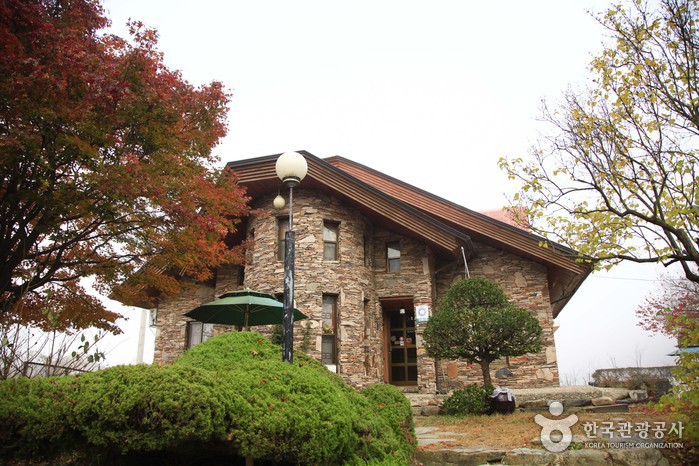

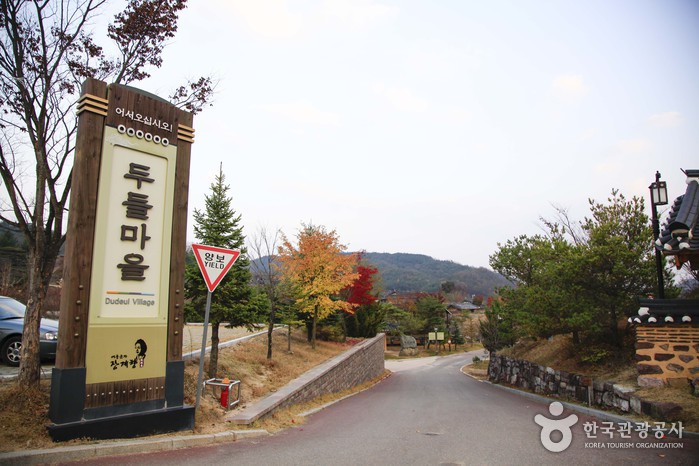
![Dalgi Mineral Spring [National Geopark] (달기약수탕 (청송 국가지질공원))](http://tong.visitkorea.or.kr/cms/resource/16/2703516_image2_1.jpg)
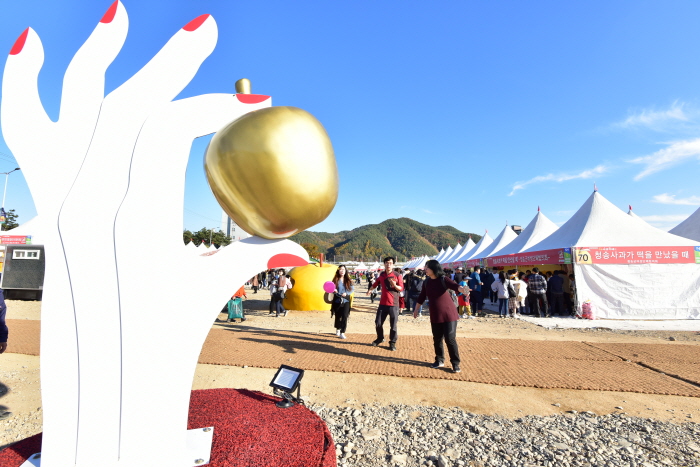
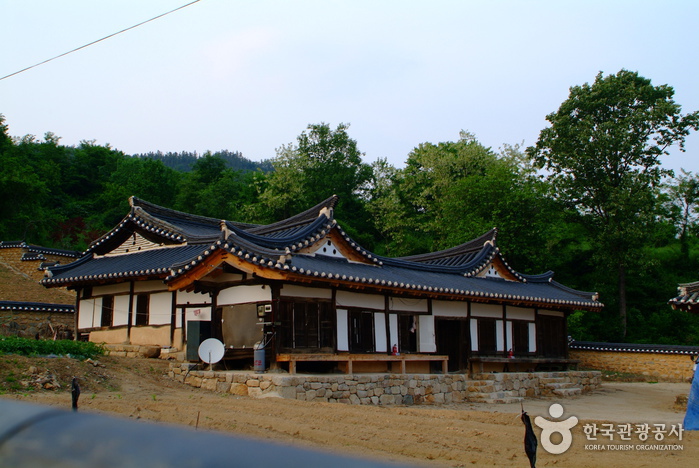
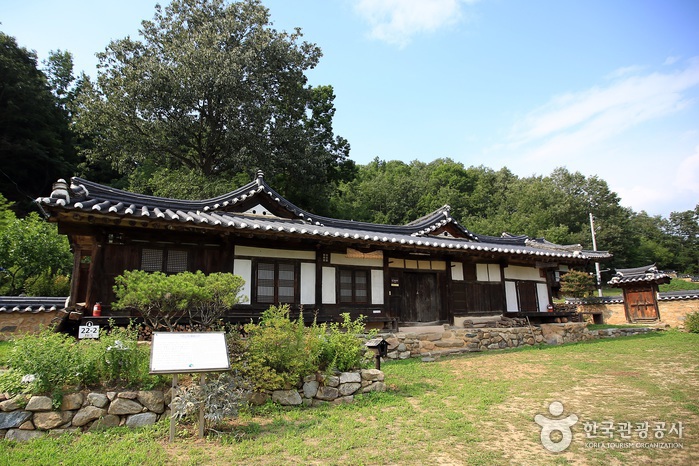
![House of Changsil [Korea Quality] / 창실고택 [한국관광 품질인증]](http://tong.visitkorea.or.kr/cms/resource/31/3037031_image2_1.jpg)
![Chalbanggong Head House [Korea Quality] / 찰방공종택 [한국관광 품질인증]](http://tong.visitkorea.or.kr/cms/resource/07/2528907_image2_1.jpg)
 English
English
 한국어
한국어 日本語
日本語 中文(简体)
中文(简体) Deutsch
Deutsch Français
Français Español
Español Русский
Русский